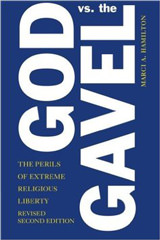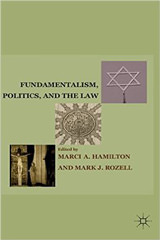This year has been an interesting year if for no other reason than that child protection issues are now front and center in the media, and there have been developments (some forward, some backward) at the state, federal, and global levels. Why is this a big deal? The short answer is that until about 12 years ago, there was mostly silence about child protection. The public did not know about the widespread child sex abuse being covered up by bishops, or children dying from treatable medical ailments, or short statutes of limitations that virtually guaranteed no child abuse victim would be able to obtain justice. At the same time, the institutions and individuals that created the conditions for abuse kept their secrets indefinitely, or at least until they could be certain they were protected from repercussions.
Children can’t vote and they have paid a price for it. Now, governments, legislators, and many others are working hard to find a way to protect children from dangers including child pornography, trafficking, medical neglect, and sex abuse. The great neglected are becoming the cared for, one step at a time. But there are also new risks for children, which require even more vigilance and which are a reminder that the protection of children requires consistent attention, not merely occasional nods in their direction.
On balance, 2014 confirms that a lot of activity does not necessarily mean good results. Yet, the very fact of the commotion educates the public and lawmakers for later developments. The following is only a summary of what happened in 2014, because inclusion of every development would require more than a column can accommodate.
2014 State Developments Related to the Protection of Children
Statutes of Limitations (SOLs). For information on each state discussed below (and the rest of them), check out www.SOL-reform.com.
- New York. This is a true case of some states moving forward, while a handful like New York are stuck in antiquated laws that only help perpetrators and institutions that cover up for them. New York yet again stayed firmly mired in the five worst states in the country for victims’ access to justice. The Republican senate has failed to act, and Gov. Andrew Cuomo has ignored the issue.
- The California legislature passed a significant extension on the civil SOL and eliminated the criminal SOL. Like last year, Gov. Jerry Brown vetoed the civil extension. The criminal elimination is worthwhile nonetheless.
- For the first time, Georgia considered significant improvement in its SOL. Nothing happened. A new bill has been introduced for the 2015 session.
- Hawaii. This state led the pack with the first-ever two-year extension of a window (which revives previously expired SOLs for a set period of time), making their window the longest in history: a total of four years. This move proves that a window does not cause a state to sink into the ocean and is so obviously important to the common good (survivors, institutions, and the public alike).
Here is a 2014, 50-state comparison of civil SOLs for child sex abuse victims.
Light Shown on Evangelical Colleges, Sex Assault, and Incest. Bob Jones University and Patrick Henry College had sex abuse and assault scandals in 2014, with BJU officials telling victims to keep it to themselves for the protection of the faith. Sad for the survivors made feel like their suffering did not matter, but there is an upside. Such public scandals are actually the precursor to reform, so this is not all bad news.
Some Evangelicals Moving Toward the Protection of LGBT. Along with the Catholic bishops, evangelical Christians have led the battle against same-sex marriage, and against other rights of LGBT individuals. Chinks in the armor started to show several years ago when students emerged from the shadows and this year when a leader broke ranks and pledged to fight LGBT discrimination.
The Deaths of Children in Faith-healing Communities. Faith-healing communities are dangerous to children. One former member of a faith-healing sect told me that she had been to 135 funerals for children by the time she was 30.
Oregon has been an epicenter of large numbers of child deaths due to faith, most in the Followers of Christ Church and the Church of the First Born. The state has incrementally increased the legal accountability of faith-healing parents to ensure their children do not die, and prosecutors have stepped up. The good news for children is that there were jury convictions against faith-healing parents in 2014, which raises deterrence and sends a message that the deaths of children from medically treatable ailments even in insular groups are unacceptable.
Idaho has witnessed an influx of faith-healing believers and the attendant child deaths that follow. The issue became so worrisome that legislation was proposed to increase legal options for prosecutors in such cases. It was blocked.
State Religious Freedom Restoration Acts (RFRAs). The worst news for child protection in the religious context has been the fevered push by religious organizations, largely prompted by the goal of permitting believers to refuse to do business with LGBT individuals. But these laws also create an opening for faith-healing parents to avoid liability and criminal accountability for the death or disability of their children. From the perspective of children being beaten, sexually assaulted, suffering statutory rape, or suffering on their way to death from easily treated ailments, a state RFRA is more of a Religious Act of Tyranny (RAT).
Bill Cosby. There was also a moment of public education when over 20 women came forward with similar charges of rape through being drugged or intoxicated. In the wake of a woman who was a child when the abuse occurred, the short SOLs for rape became a standard discussion in the media and in ordinary discussions. The country was also treated to the usual modus operandi: child and women rape cases involving the powerful (whether celebrities, organizations, religious leaders, or sports teams and leagues), are subjected to scorched earth legal practices, including the use of the SOLs in cases where over 20 rapes have been alleged nationwide. We also witnessed the big change on these issues as the prosecutors in LA are seeking to meet with Cosby despite the fact so far all cases alleged have missed the criminal SOLs.
2014 Federal Developments Related to the Protection of Children
The federal arena was not a particularly successful venue for child advocates.
Restitution for Child Pornography. In Paroline v. United States, the Supreme Court addressed the following “Question Presented”:
In determining restitution in child pornography cases pursuant to 18 U.S.C. 2259(b)(3), is the award of restitution limited to losses proximately caused by the defendant’s criminal actions or may a defendant be required to pay restitution for all losses, regardless of whether his criminal acts proximately caused the loss?
In other words, does federal law permit a victim of child pornography to obtain restitution from one perpetrator, whether viewer, possessor, or creator, and force one defendant to pay all of the restitution potentially due from all. In Paroline, the question was whether a possessor of two images could be liable for all of the damages produced by the most widely distributed child pornography images in history.
The Court said, “No,” and advocates immediately went to Capitol Hill to lobby to level the playing field between child pornography victims and the child pornography marketplace. There are good ideas out there, but nothing from Congress yet.
Milwaukee Archdiocese Bankruptcy in Federal Court. The apparently never-ending Milwaukee Archdiocese bankruptcy, which was filed when there were only a few sex abuse cases, but ballooned to over 550 survivors, has hit one snag after another. Last week, a group of priests, survivors, and advocates sent an open letter to Pope Francis, asking him to do something about the way the Archdiocese has treated the victims of priests in the parish.
The President and all members of Congress failed to acknowledge the fact of clergy sex abuse and the role religion has played in creating the conditions for abuse. Congress and the President continued their 12-year tradition of never uttering the term “clergy sex abuse,” let alone acknowledging its existence. Apparently they believe only the Australian federal government should hold churches responsible for the protection of children from horrendous actions by trusted religious leaders, which I discuss below. Our national leaders sadly have chosen the path of political least resistance, rather than justice and the protection of children. It will be interesting to see whether the presidential candidates and their parties take up child safety as a platform plank. It was a lot easier to ignore the issue 12 years ago. They ignore it now at their peril.
2014 Global Developments Related to the Protection of Children
The global developments were awe-inspiring. 2014 was the first year a child ever won a Nobel Prize, Malala Yousafzai, and it was for the educational rights of children. At the urging of the Survivors Network of those Abused by Priests (SNAP), the United Nations Committee on Children condemned the Holy See for its failure to protect children in very strong language. The Australian Royal Commission has made headlines with its investigation into abuse in all religious entities. It has been a national catharsis, but the results are also deeply disturbing. Australia leads the world in frankly addressing child sex abuse in the religious context and in educating its public (and the world) in the ways many respected faiths endanger children.
On the horrific side, Boko Haram’s kidnapping hundreds of school girls and raping them or giving them away to other men is tragic, to put it mildly.
To sum up, there are some good reasons to celebrate 2014 but no justification to slow down the fight for child protection.










Thanks Marci for the overview. It is sometimes difficult to see progress and movement forward with these concerns, yet, as you indicated, there is clearly so much more work to be done, locally, state-wide and nationally.